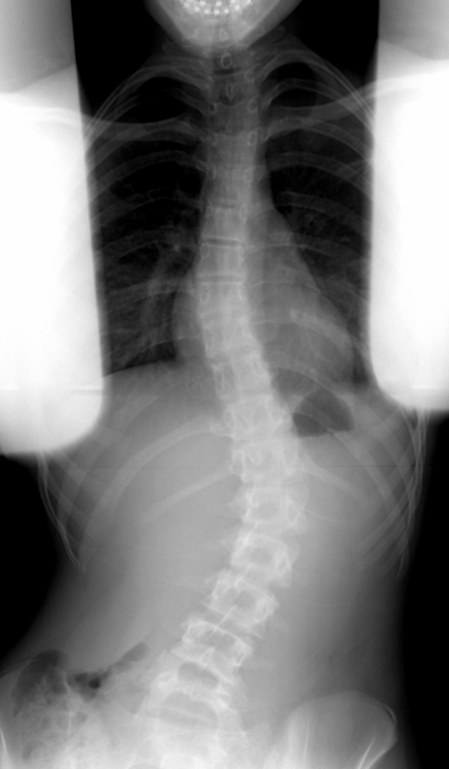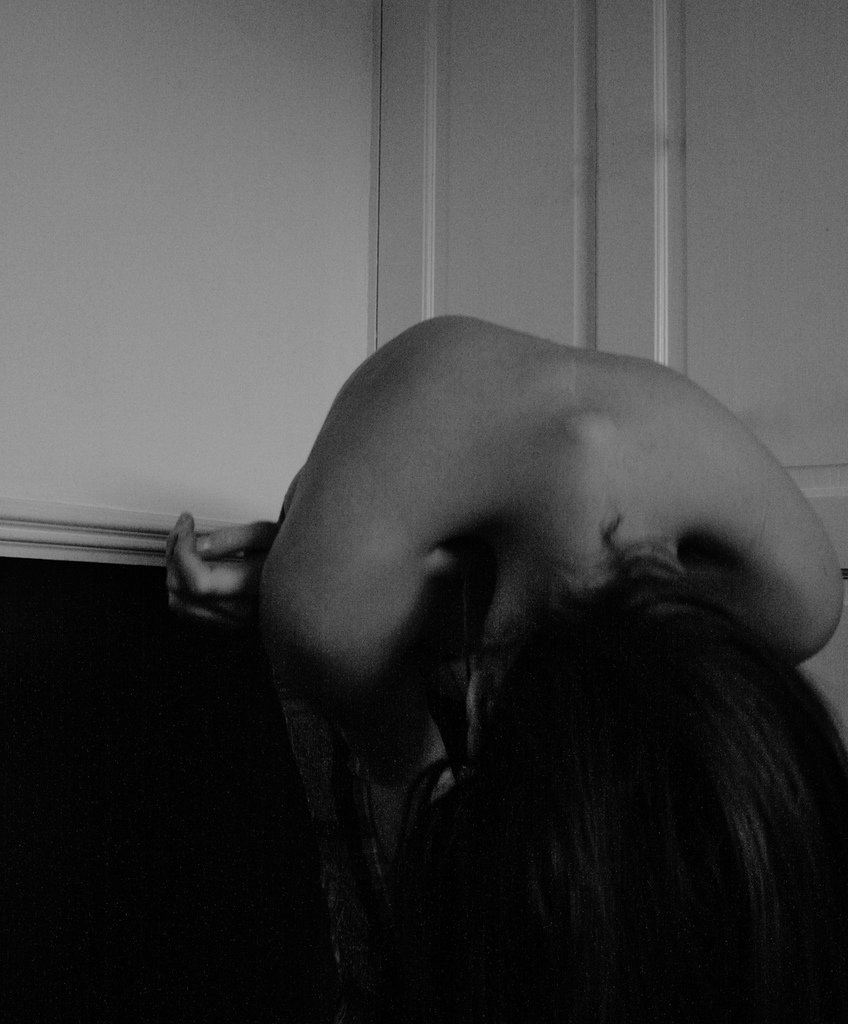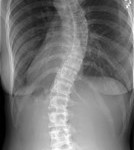
X-ray revealing scoliosis
carol murray via Compfight cc
Scoliosis affects about 2% of the population and often first appears during childhood and adolescence—which is why some states still require scoliosis screenings at schools. But how helpful are these checks, and are kids with scoliosis getting the care they need?
Scoliosis screenings
Scoliosis is an abnormal curvature or twisting of the spine. The curve may favor the left or right of the body, or it may cause the spine to curve too far forward or back. Although in many cases the specific causes of scoliosis is unknown, there is some evidence that it’s tied to genetics, particularly with the X chromosome (which explains why females are more likely to be affected than males).
Scoliosis screenings at schools are essentially a quick visual analysis. A school nurse (or sometimes a local chiropractor or orthopedic surgeon) has each student lean forward with head and arms down, while he or she checks for what’s called a “rib hump,” meaning the ribs are more prominent on one side than the other.

Example of rib hump
strawberry-walrus via Compfight cc
If this evidence of scoliosis is found, the student will undergo further analysis to determine the extent of the problem. If the abnormal curve of the spine is more than 30 degrees to the left or right, one shoulder and/or hip is likely to be higher than the other. In addition to potential issues with walking and standing, distortion of the chest cavity can cause problems with the lungs and heart. For this reason, these more extreme cases receive early treatment (sometimes including surgery to straighten the spine).
An abnormal curvature that’s less than 30 degrees is not considered a serious medical problem. For many of these students, the school just makes a note to “wait and see,” monitoring the problem from year to year to make sure it doesn’t get worse.
While these scoliosis screenings are done with good intentions and do catch major problems, for children and teens with less extreme cases these steps aren’t enough.
First of all, the visual analysis focuses mostly on rib hump, but only 20% of scoliosis patients show this. So it’s likely many cases are going undetected. Secondly, the “wait and see” approach falls short because most cases of scoliosis do get worse and cause problems down the road.
Long-term effects of scoliosis
While scoliosis only affects 2% of the general population, nearly 40% of the patients in our office have some degree of scoliosis. The abnormal curves tend to destabilize the spine and make it more susceptible to injury and pain. Usually these symptoms start appearing when the patients are in their mid- to late 20s. By that point, the crookedness of the spine has already caused problems with muscle development, and as patients tend to grow less active as they age, they are more susceptible to painful muscle cramps.
Another thing we see is increased wear on the spine. The spine of a 30-year-old with scoliosis is much more like the spine of a 50-year old. A 50-year-old’s spine tends to function more like that of a 70-year-old—and chances are the patient feels more like a 70-year-old when it comes to staying active.
So from a chiropractic perspective, the “let’s wait and see what happens” approach can cause worse problems to develop down the road.
It’s far better to address scoliosis as soon as it’s identified to lessen the effect on the spine. Treatment for scoliosis sometimes includes spinal adjustments, but it can also take the form of daily, targeted stretching that can strengthen and stabilize the spine.
If you suspect you (or a child) may have some form of scoliosis (whether it showed up in a screening or not), talk to us and we can take a proactive approach. Let’s make sure scoliosis doesn’t slow you down in the years to come.
Scoliosis Treatment
Scoliosis treatment is a complicated condition with many treatment options. Dr, Maggio of the ProAdjuster Chiropractic Clinic explains this condition.
Scoliosis treatment comes in many severities
Scoliosis comes in many severities. There are many reasons why someone would develop scoliosis. Scoliosis is basically a curvature in someones spine. It can be rated as mild, moderate, and severe. Severe scoliosis may result in eventual surgery. Mild to moderate scoliosis often does not need surgery. People who do have scoliosis will develop spinal problems much more rapidly than those who do not have scoliosis.
Scoliosis treatment creates instability of a person’s spine. When they stand, walk, and run this creates extra stress on the body. This can lead to early wear and tear of the joints of the spine, hips, and knees for people who have scoliosis. On average people who have scoliosis have x-rays that look twenty to thirty years older than they are. In other words when we look at x-rays of someone’s spine who is thirty years old who has scoliosis the arthritis levels are usually similar to someone in their fifties or sixties. Likewise if we see someone in their sixties with scoliosis their x-rays look like someone who is in their eighties.
Unfortunately scoliosis can be extremely debilitating and accelerate early pain syndromes associated with back problems. There is help for scoliosis as it can be stabilized. Treatment with many modalities including chiropractic are available. Chiropractic has been known to stabilize scoliosis and prevent it from getting worse.
There are many ways to measure scoliosis. The most common is through x-ray analysis. X-rays are taken from the front on the side. Most of the time they are taken in the mid back, and low back. Commonly they are taken in the neck. Sometime the scoliosis is so bad that x-rays need to be modified to see the hidden structures of the spine.


Leave A Comment